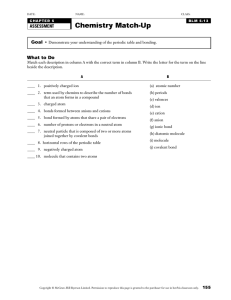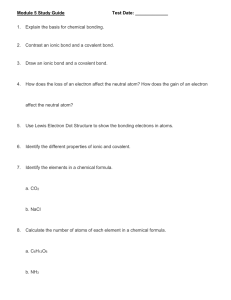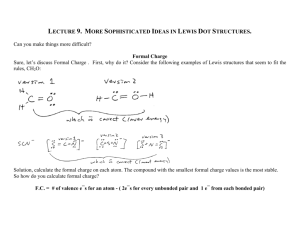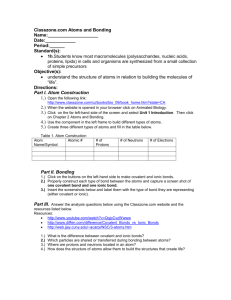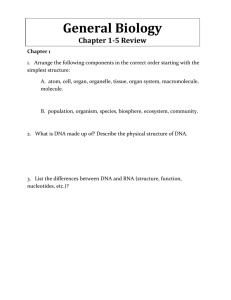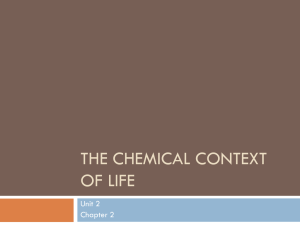Biology Chapter 2 Study Guide - Atoms, Bonds, and Water
advertisement
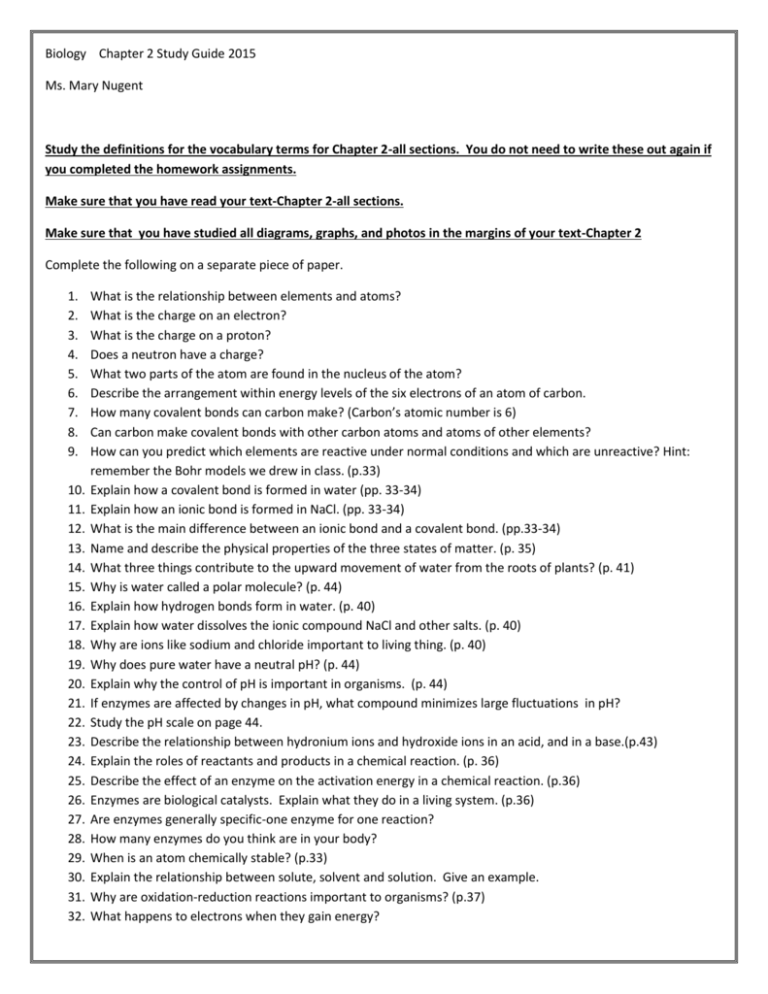
Biology Chapter 2 Study Guide 2015 Ms. Mary Nugent Study the definitions for the vocabulary terms for Chapter 2-all sections. You do not need to write these out again if you completed the homework assignments. Make sure that you have read your text-Chapter 2-all sections. Make sure that you have studied all diagrams, graphs, and photos in the margins of your text-Chapter 2 Complete the following on a separate piece of paper. 1. 2. 3. 4. 5. 6. 7. 8. 9. 10. 11. 12. 13. 14. 15. 16. 17. 18. 19. 20. 21. 22. 23. 24. 25. 26. 27. 28. 29. 30. 31. 32. What is the relationship between elements and atoms? What is the charge on an electron? What is the charge on a proton? Does a neutron have a charge? What two parts of the atom are found in the nucleus of the atom? Describe the arrangement within energy levels of the six electrons of an atom of carbon. How many covalent bonds can carbon make? (Carbon’s atomic number is 6) Can carbon make covalent bonds with other carbon atoms and atoms of other elements? How can you predict which elements are reactive under normal conditions and which are unreactive? Hint: remember the Bohr models we drew in class. (p.33) Explain how a covalent bond is formed in water (pp. 33-34) Explain how an ionic bond is formed in NaCl. (pp. 33-34) What is the main difference between an ionic bond and a covalent bond. (pp.33-34) Name and describe the physical properties of the three states of matter. (p. 35) What three things contribute to the upward movement of water from the roots of plants? (p. 41) Why is water called a polar molecule? (p. 44) Explain how hydrogen bonds form in water. (p. 40) Explain how water dissolves the ionic compound NaCl and other salts. (p. 40) Why are ions like sodium and chloride important to living thing. (p. 40) Why does pure water have a neutral pH? (p. 44) Explain why the control of pH is important in organisms. (p. 44) If enzymes are affected by changes in pH, what compound minimizes large fluctuations in pH? Study the pH scale on page 44. Describe the relationship between hydronium ions and hydroxide ions in an acid, and in a base.(p.43) Explain the roles of reactants and products in a chemical reaction. (p. 36) Describe the effect of an enzyme on the activation energy in a chemical reaction. (p.36) Enzymes are biological catalysts. Explain what they do in a living system. (p.36) Are enzymes generally specific-one enzyme for one reaction? How many enzymes do you think are in your body? When is an atom chemically stable? (p.33) Explain the relationship between solute, solvent and solution. Give an example. Why are oxidation-reduction reactions important to organisms? (p.37) What happens to electrons when they gain energy?

